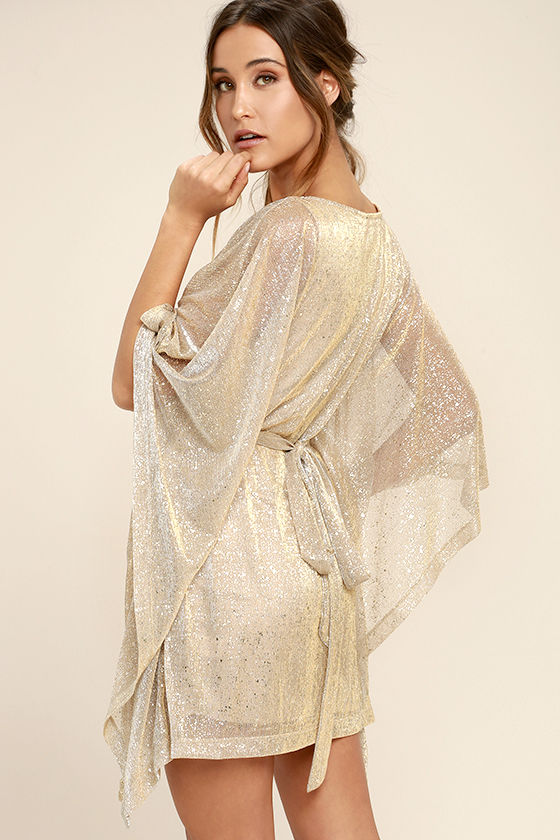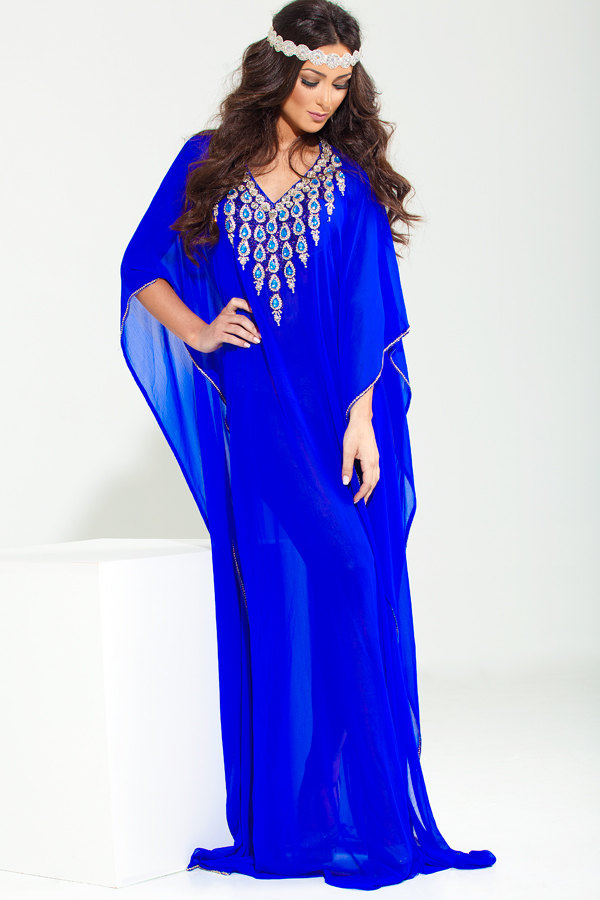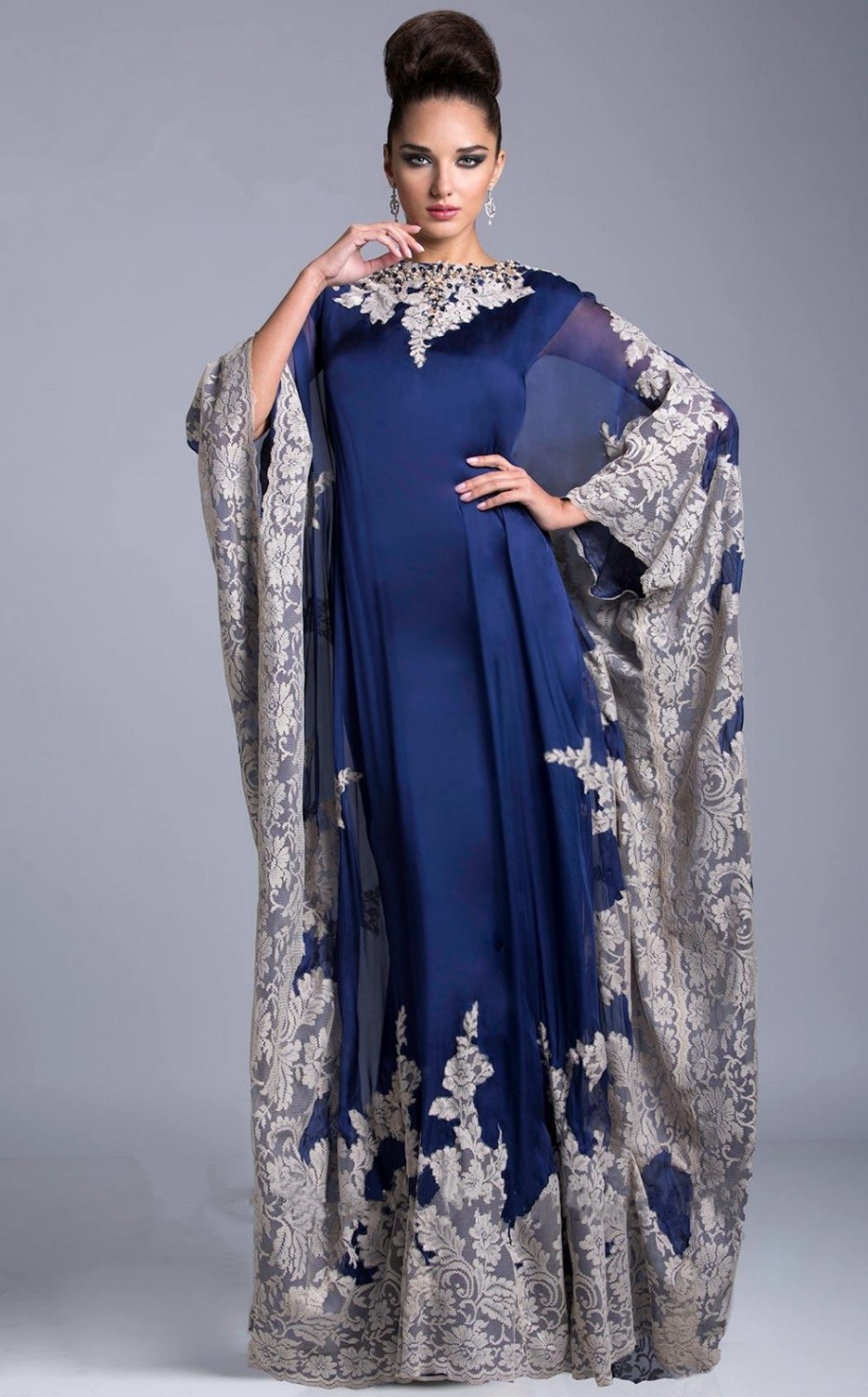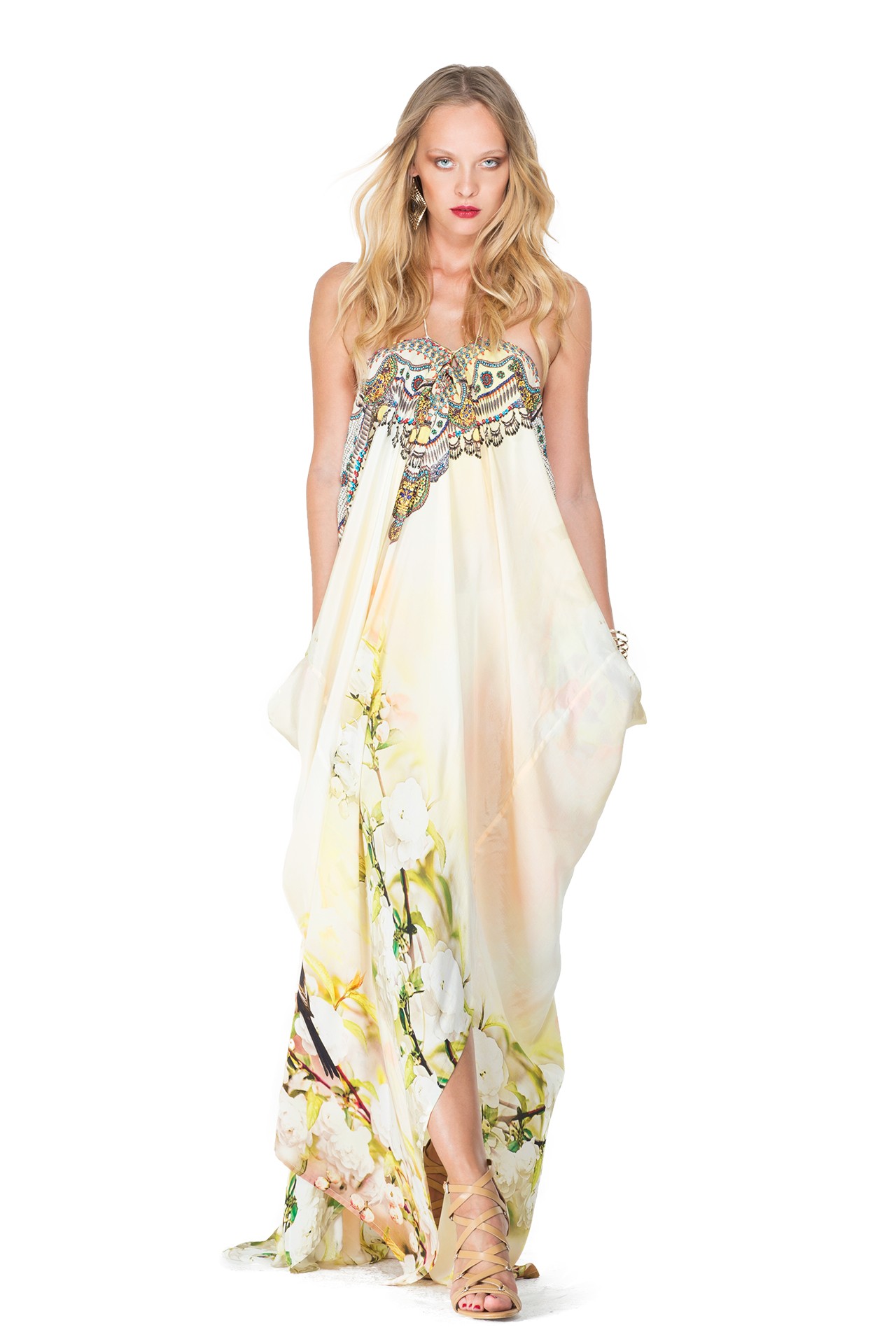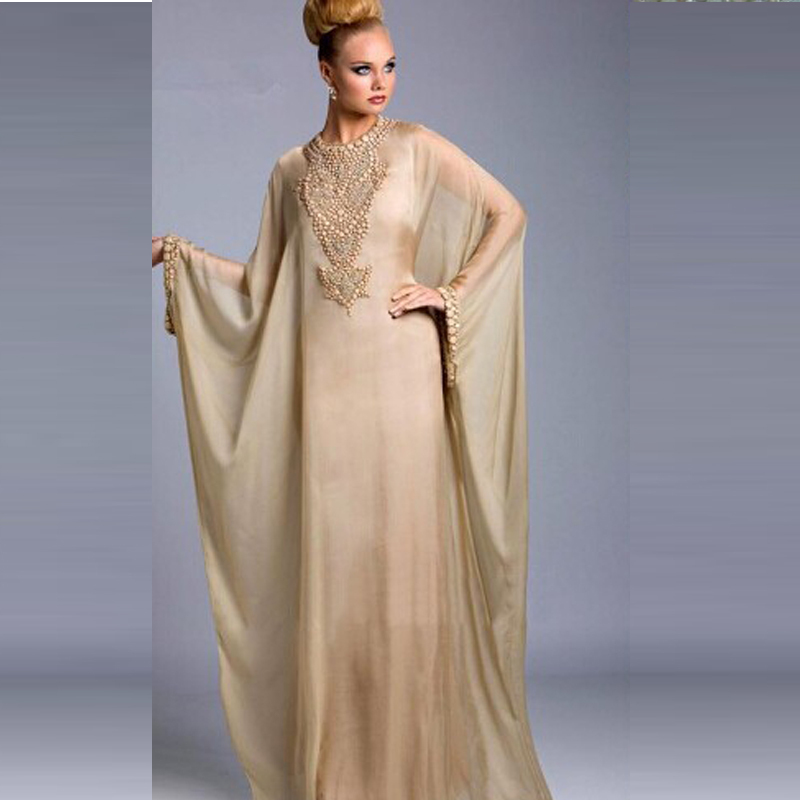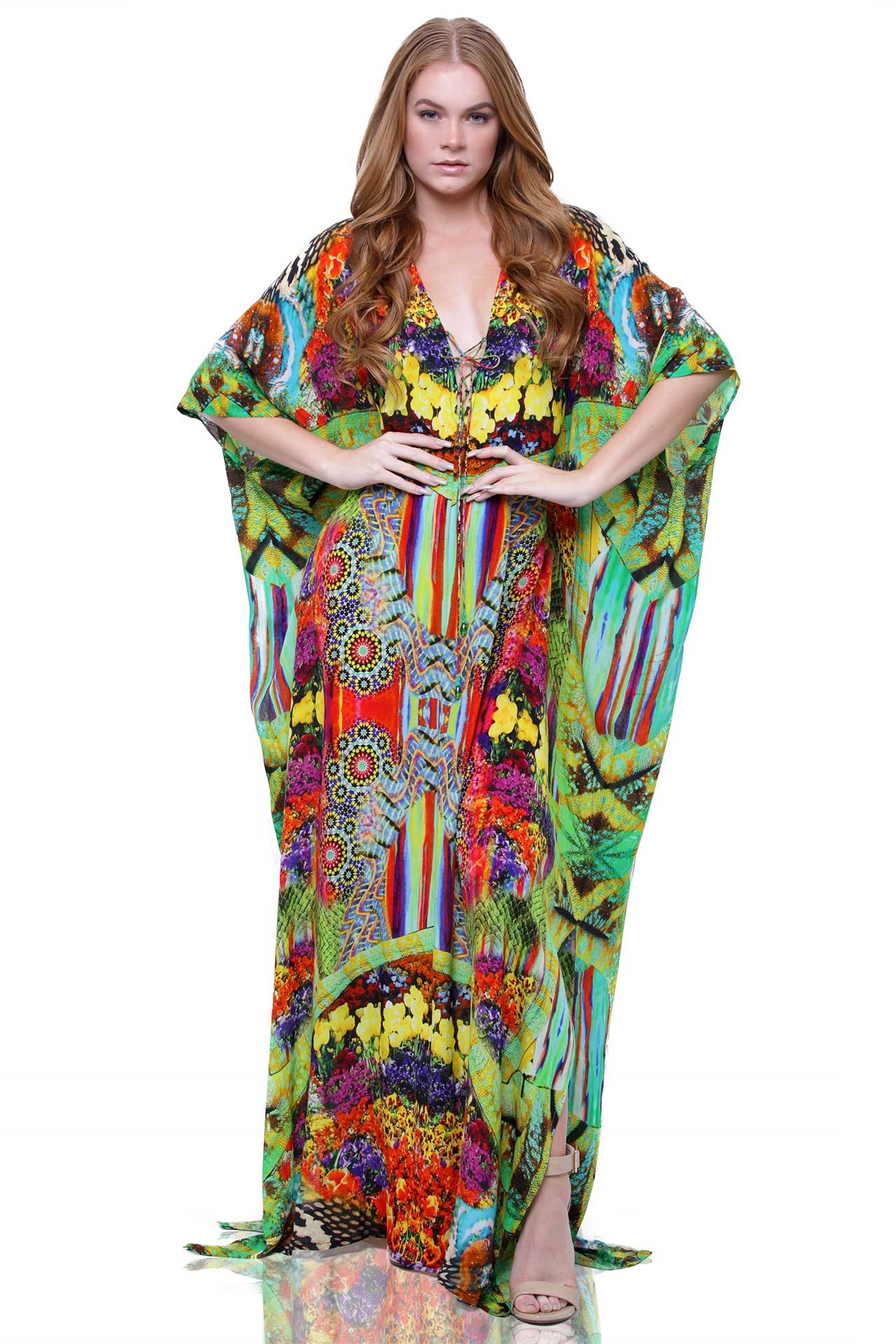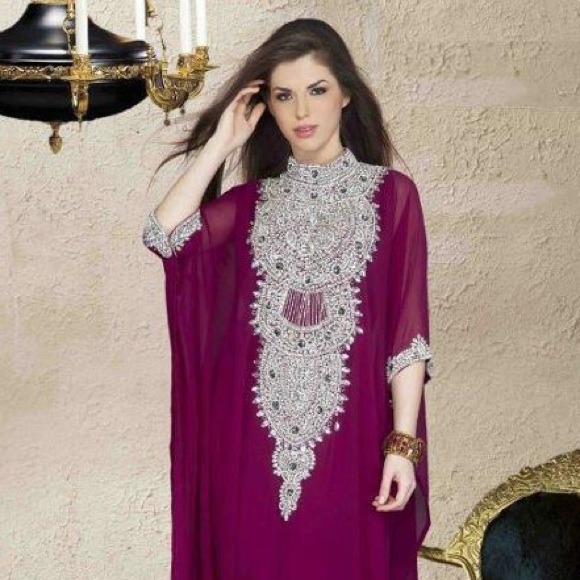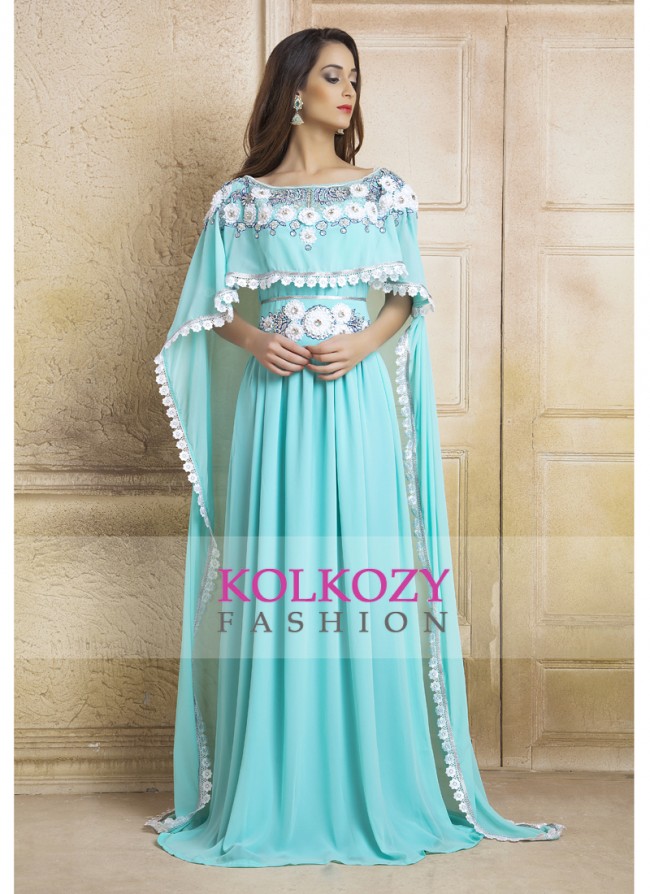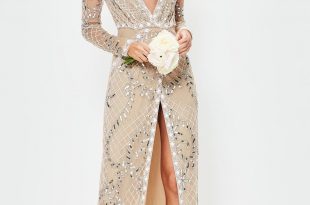At its simplest, the kaftan dresses are solely a kind of long-sleeved, ankle-length gown or tunic that closes or buttons within the front. This simplicity, however, disguises the long and varied history of the kaftan and its dozens of designs and variations across many alternative cultures. Within the last many decades, the kaftan has become progressively widespread in Western countries, primarily as a woman’s fashion. The kaftan dress appeals to all or any tastes as a result of its straightforward, all-mains and might add barely of the standard or the exotic into a wardrobe.
The classic kaftan generally has open, billowing sleeves and a high collar, although trendy variations might have v-neck collars or different cuts. Some ancient versions have tighter, narrower sleeves, though this varies from region to region. Buttons or ties are found on the front of the garment from the neck to the waist, except on pull-over styles. A sash or a tunic is worn on the waist to relinquish some form to the otherwise freely-flowing tunic. The standard style reaches all the way down to the ankles, although trendy versions could also be shorter and kaftan-inspired tunics are typically worn as shirts or blouses. A sweater, cloak or loose outer-jacket completes the standard kaftan.
Perhaps the best virtue of the garment is its ability to completely different climate. Loose kaftans manufactured from lighter materials are good for decent climates, whereas heavier versions are applicable for cooler conditions. The kaftan is loose enough to be worn over underneath garments and versatile enough to be worn under significant article of clothing. It is often control near the body at the waist or disentangled for coolness; the buttons or ties are often unbroken fastened to completely different heights supported temperature. The kaftan was and remains a form of general, everyday garment for year-around wear in its countries of origin.
Kaftan dresses and clothes may also be found outside of those regions. In components of West Africa a kaftan-like sweater is common, and a few Southeast Asian cultures utilize an analogous garment in batik material. The word itself additionally created its means into the Russian language, within which it refers to a recent variety of man’s suit instead of a loose tunic.
The kaftan’s standing as a flexible, general garment ensured its adoption by modern fashion. It is often worn long or short, tied or loose, and might be cut or worn to praise anybody-type. Kaftan-style clothes are all-mains to any scenario or mode. Designers have made topnotch in a very kaftan style with billowing sleeves and v-necks for everyday wear. Full-length kaftans are often used as cover-ups for the beach or pool. Wearers are liberated to decorate their kaftan dresses on ancient lines, as an example with a sash, belt or outer-coat, or they will adapt it for his or her current wardrobe. The kaftan’s presence in various cultures across a large region may be a testament to its skillfulness and quality.
- kaftan dresses lovely gold dress – kaftan dress – metallic dress – belted dress – $74.00 QXSEBNM
- kaftan dresses absolutely love this…iu0027ve wanted one for such a long tim QFCDLOM
- online buy wholesale abaya kaftan dresses from china abaya kaftan . PBLZBZN
- kaftan dresses – designer dresses as seen on lisa vanderpump – shahida parides OVFUWRD
- palasfashion womenu0027s hand embroidered moroccan kaftan dresses kkpf1053-6 gray uk size: 6 OYJVHIL
- kaftan dresses graceful dubai kaftan dress abayas for sale champagne chiffon beaded long sleeves prom dresses XBJLAPS
- shop silk kaftans and long kaftan dresses | shahida parides – shahida parides BKNNAZB
- kaftan dresses stunning kaftan dress ADWCZJT
- kaftan dresses long kaftan farasha moroccan kaftan dress abaya jilbab islamic arabian clothing CMCCWQO
- kaftan dresses goddis torrin caftan in salt u0026 pepper DWWRXEF
- kaftan dresses blue color kaftan dress-georgette hand beaded designer kaftan and ribbon work KFZTUNO
- kaftan dresses – designer kaftan dress | dresses shahida parides – shahida parides FIWDLTK
 boloblog.com Outfit ideas and latest fashion trends
boloblog.com Outfit ideas and latest fashion trends

